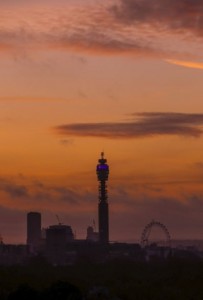London’s skyline is one of the best in the world thanks to the diversity of the buildings. There are many iconic structures in the city, including the Shard, Walkie Talkie, and more. The BT Tower is one of the most impressive and has a fantastic history. It could also have a really interesting future ahead. We want to look at that today, then if you want to work with architects in London, you can rely on us.
A piece of history
 The BT Tower was built from 1961-1964. It was a symbol of the development of the communications industry, allowing microwave signals to travel across the UK for calls. For decades it was a crucial piece of the telecommunications infrastructure in the city. It was also a popular spot for visitors thanks to the viewing galleries and revolving restaurant.
The BT Tower was built from 1961-1964. It was a symbol of the development of the communications industry, allowing microwave signals to travel across the UK for calls. For decades it was a crucial piece of the telecommunications infrastructure in the city. It was also a popular spot for visitors thanks to the viewing galleries and revolving restaurant.
The tower has an incredible design. The original architect, Eric Bedford, said it was a once in a lifetime project. On completion, it became the tallest building in the UK. At 177m (189m if you factor in the additional aerial rigging), it took the title from the 119m Millbank Tower. It held it until 1980 and the completion of the 183m Tower 42 (originally the NatWest Tower).
Celebrating the design and history of the building, it got a Grade II listing in 2003. English Heritage declared it to be a national monument. It is beloved by all and an inspiration to architects in London.
Redevelopment
While the tower itself is iconic, it is now defunct. Technological advances mean we no longer use microwaves for communications. In fact, the antennae were removed in 2011 after getting listed building consent.
With this in mind, BT has chosen to sell the tower for £275m. The new owner is MCR, one of the biggest hotel operators in the US. Their portfolio of properties is an impressive $5bn, with 150 hotels and over 25,000 rooms. Some of these buildings are iconic in their own right, including the TWA Hotel at JFK Airport in New York.
MCR would like to transform the BT Tower into a high end hotel. They want to reimagine the building, preserving its history and iconic design but bringing it back to life. This would also open it back up to the public. It has been closed for visitors since 1980 following a bombing a few years earlier.
It will take several years for BT to vacate the tower owing to the amount of complex equipment it contains. As a result, there is plenty of time to spend on designing how to convert it into a hotel. It will provide opportunities to consult local residents and other stakeholders to see what they would like from the redevelopment. This could include reopening the revolving restaurant.
Talk to architects in London
Coffey Architects is a fantastic company if you are looking to redevelop different buildings, including iconic structures. Our team has passion for preserving the history of these properties but can also ensure they get a new life. We can look at different options and suggest the best one for any kind of brief.
So, if you want help from top architects in London, speak to us. We can help with every aspect of a project, especially design and planning.
